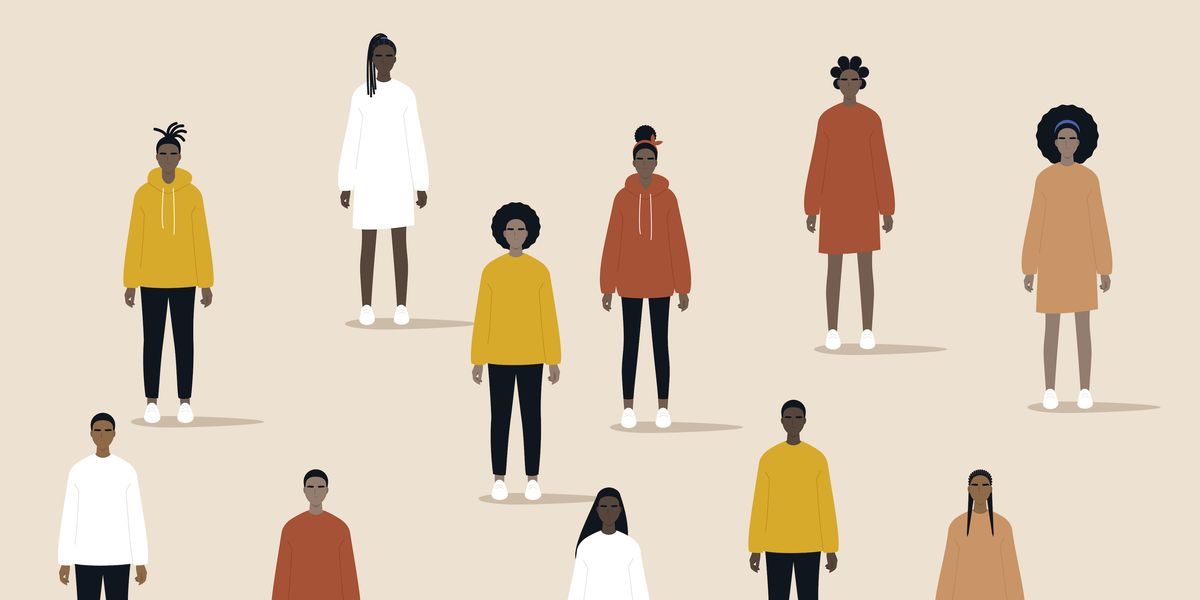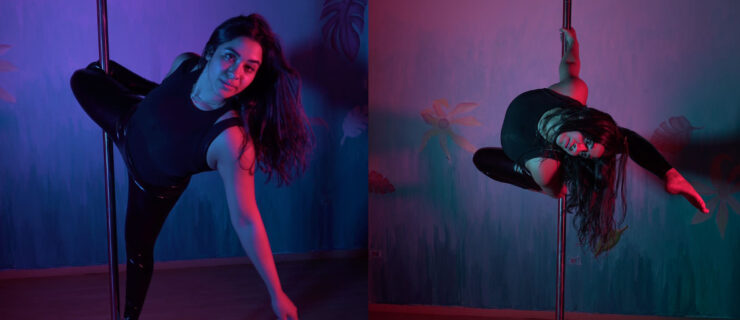Exclusion Is Oppression: From Pedagogy to Performance
Colonialism and slavery violently disrupted the histories of Black, Indigenous and people of color (BIPOC). White folks appointed themselves tellers of all stories, and their viewpoints have rewritten, erased or entirely excluded other narratives. BIPOC dance artists have, for long, felt this exclusion while being exploited. This exclusion is still the source of trauma for many BIPOC artists in 2020. Recent online posts address it, Black educators teach it and Black dancers experience it. Still, dance organizations continue to use Black culture and contributions to their own benefit, while deleting the Black artists themselves—from pedagogy to performance.
Dance Education Rooted in Oppression
In my own dance education, dance was taught to me through a reduced lens—a narrow lens. I was taught a lie; that ballet was the foundation of all dance forms. Not true… far from it. What was true is that ballet, a Eurocentric dance form, was created from whiteness and has never ceased to be exclusionary.
Recently, I had a phone conversation with two Black male colleagues who are educators and performers. We talked about how similar our graduate school experiences were: the centering of whiteness in the curriculum, the feeling of isolation as you navigated the spaces you came in contact with and the politics of erasure. Michael Medcalf, now an assistant professor of dance at University of Memphis, spoke of the dance history course he took in graduate school as “challenging.” He expressed that the class touched on the biographies of Donald McKayle (1930–2018), Alvin Ailey (1931–1989), Pearl Primus (1919–1994), Katherine Dunham (1909–2006), with a sprinkling introduction of Asadata Dafora (1890–1965). However, Medcalf acknowledged that he and his cohort mostly unpacked ballets like Swan Lake and Giselle to study feminist theory through the male gaze and debated the beginnings of American Modern Dance through Duncan, Shawn, Holm and other white artists. Medcalf noted there was no critical discourse on the historical contributions of Bill “Bojangles” Robinson (1878–1949), John W. Bubbles (1902–1986), Charles “Honi” Coles (1911–1992) and Charles “Cholly” Atkins (1913–2003), Fayard Nicholas (1914–2006) and Harold Nicholas (1921–2000), or Janet Collins (1917–2003). He remembered the void in Black representation when his professor and classmates discussed the Judson Church era, wondering, “Where were all the Black folks?”
This experience compelled Medcalf to help reshape the dance curriculum at Alabama State University during his tenure there from 2013–2018. He, along with his colleagues, knew that the fullness of dance history could not be taught in one semester, so they developed a two-semester course that spanned the Baroque period to contemporary hip hop, while remaining mindful of who gets omitted versus admitted. He was intentional about including Talley Beatty, Josephine Baker and Dianne McIntyre. He also taught about Joan Myers Brown, Cleo Parker Robinson, Lula Washington, Ann Williams and Jeraldyne Blunden, whom he emphatically labeled “the fabulous five.” He said, “We must be careful when talking about an individual’s contribution to dance history,” adding, “it suggests that they lie on the periphery instead of embedded within.” He then categorically stated, “There is no dance history without Black history.”
Exclusion in academic realms can come from unexpected places. Iquail Shaheed, assistant professor of dance at Goucher College, remembered his time in graduate school at SUNY Purchase, where he studied choreography and composition, saying “My dance composition teacher and coach, a Japanese dancer and educator, was paradoxical in her pedagogy. Although she was not white, she encouraged white principles in dance composition practices. This teacher would push me to find my voice in the subject of Blackness. Unfortunately, my explorations had to fit within the confines of whiteness or they were never received as good choreography.”
Black Dance Forms Minus the Black Dancer: An Oppressive Act of Exclusion
When Black dancers tell their stories, they spill truths about being tokenized. We are asked to perform our Blackness in ways either passively violent or acutely racist. I have had white choreographers say to me “I know you have rhythm, you’re Black!” when offering a correction about musicality. I’ve also had white dance teachers say “Do what you would do when you dance with your Black friends,” as a prompt for a movement- improvisation exercise. As if me being present in my already full Blackness wasn’t enough.
It is no secret that in most university dance programs, ballet and modern are academic necessities, and that African diasporic forms are electives, rarely offered or required. Now a professor myself at Kent State University, I look to other Black dance scholars like Dr. Brenda Dixon-Gottschild, Dr. Takiyah Nur Amin, Dr. Raquel Monroe, Dr. Nyama McCarthy-Brown and Dr. Thomas DeFrantz, who have long been theorizing about the Black body, reminding us of ways it has been excluded from academic and performing spaces.
In Digging the Africanist Presence in American Performance, Dixon-Gottschild reminds us that we don’t have to look far to see the Africanist legacy in ballet, that it comes bursting through several of George Balanchine’s ballets, from Apollo (1928) up through Symphony in Three Movements (1972). She critiques elements in his movement vocabulary for Agon (1957)—naming “the displacement and articulation of the hips, chest, pelvis and shoulders, instead of the vertical alignment of the torso, and attacking the beat, instead of carefully placed extensions”—as Africanist components. Holding a mirror up to Balanchine’s The Four Temperaments (1946), and the historically Black Lindy hop, Dixon-Gottschild points out the way “the female is helped into the air by the male dancer who bumps her buttocks with his knee.” Dixon-Gottschild affirms that the Lindy version is “faster, more explicit, and more dynamic, but the lift is the same, in principle.” And she isn’t the only scholar who speaks of such appropriation and erasure. In Writing Dancing in the Age of Postmodernism, the late Sally Banes also notes Balanchine’s use of African-American movement vocabulary. Why, then, are there so few Black dancers in New York City Ballet’s history?
Misty Copeland’s
promotion to become the first Black female principal at American Ballet Theatre was yet another public acknowledgment of a first in the contributions of Blacks to dance—Misty, we see you. But when we are the first or the only one, our presence can be mere window-dressing, a visible gesture at inclusion that only highlights the institution’s historic exclusion.
I remember a conversation I once had with Rod Harrelson, the single Black male dancer swing on the national tour of Swing!—a dance-based Broadway hit from 1999 to 2001. He wondered why there weren’t more Blacks and people of color to cover ensemble roles. This was ironic because swing is a dance genre that originated in the African-American community in the 1920s and ’30s, with music by Black musicians, until white musical artists like Benny Goodman and the Dorsey Brothers disseminated the form to a white mainstream audience.
White America continues to guzzle up Black culture, rejecting those from which the culture came—a conscious act that is usually framed and explained away with language that pacifies. One example is believing that Miley Cyrus is to be thanked for the genesis of twerking because of her feeble attempt at the MTV Video Music Awards in 2013. The truth is, twerking can be traced back to as early as 1820 and continues to be performed in many African countries as a celebratory gesture of honor. It is neither new nor white. And within the African context, definitely not sexualized. The complex effects of appropriating cultures stunt the advancement of policies around inclusion and equity.
Things to Consider as We Work Towards Inclusion
In the wake of recent cultural, social and political actions, dance has begun a long overdue reckoning as artists demand that considerations of equity and inclusion be placed at the center of hiring, promoting, casting and programming practices. The damage of omitting Black narratives and excluding Black dancing bodies is evident as more Black and brown dance artists come
forward to share their experiences. This year, dancers George Sanders, formerly of Ballet Memphis; Nicholas Rose, formerly of National Ballet of Canada; and Felipe Domingos, formerly of Finnish National Ballet, all took to
Instagram to publicly voice their positions on how their respective companies have been complicit in anti-Blackness. Hearing personal stories in these public outcries makes the extent of the damage more easily understood.
The truth is, omitting and excluding Black bodies from the screen, the stage, the studio, the front of the lecture hall and leadership positions in dance companies impacts how the field advances and how systems of oppression reign. Mis- and underrepresentation perpetuates negative social understandings, biased standards and racist points of view. The Black dancing body is a place where history also lives: This body should be present in all spaces where dance happens, where dance is studied, where dance is supported and promoted—if we are serious about truly changing and broadening what we value moving forward, we must prepare those spaces for them. We must also:
• Acknowledge the Native American, Alaska Native and Native Hawaiian lands on which you may stand and perform. Additionally, acknowledge their native peoples.
• Alter dress codes and hairstyles that negatively impact BIPOC.
• Hire, cast and promote dancers based on talent rather than “look” or “fit.”
• Remember that Black dancing bodies were in existence before Louis XIV and Isadora Duncan, when teaching dancing history. And if your pushback is that the curriculum addresses ballet and American modern dance, then ask yourself why.
• Know that to fully include the richness of Black experiences into your organizations and schools, you must address whiteness.
• Embrace, and cite, Black culture.




